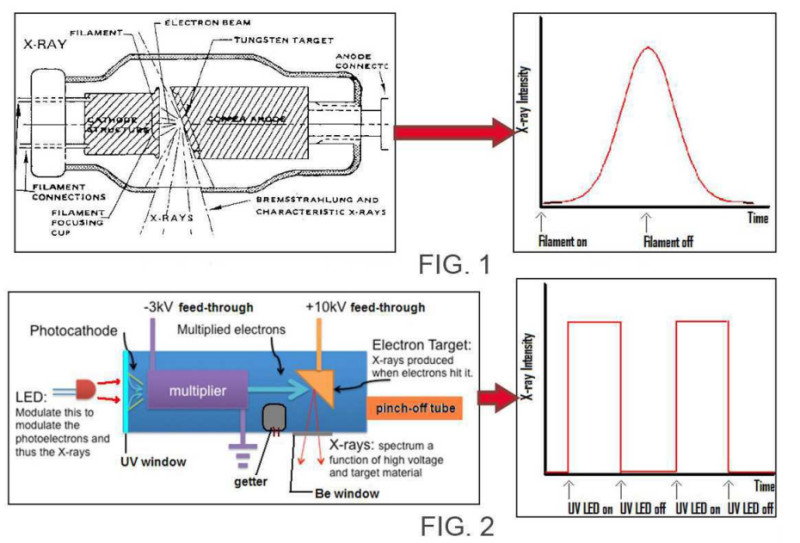X-ray data transmission in open space

Among the equipment delivered by NASA in April to the ISS, there is an experimental setup for data transmission in open space by X-ray radiation (XCOM - X-ray communications). The modulated x-ray source (MXS - modulated X-ray source, on the CDRV from the bottom in the middle) will be placed outside the ISS. To register radiation on the ISS, the NICER - Neutron Star Interior Composition Explorer is already installed, installed back in 2017 to study the possibility of using X-ray pulsars as space navigation landmarks. So the devices are located at the station relative to each other:

')
Instead of a hot cathode, a magnesium photocathode illuminated by ultraviolet LEDs was used at the source. An electron multiplier is placed between it and the anode on a multiple secondary emission — a finished component produced for mass spectrometers. The voltage of the electron multiplier is -3 kV, anode +10 kV. The usual and new X-ray tubes are shown below for comparison:

The device allows you to quickly modulate x-rays from ultraviolet LEDs. The pulse duration can be a fraction of nanoseconds, which is enough for data transmission at a speed of several Gb / s. The housing of the device can be made of metal in 3D printing. It weighs 160 grams and is placed on the palm (of course, it is better to take it in the hands off).
Having received a parallel non-diverging beam, it is possible to avoid significant power losses at large distances. True, during the experiments, the distance will be only 50 m, but it’s necessary to start somewhere. Similar sources can later be used not only for data transmission, but also as artificial space landmarks-beacons, as well as on earth for X-ray diffraction and chemical analysis by X-ray spectroscopy.
And considering what a holiday today is, we are waiting for a space X-ray 73 in the near future!
Source: https://habr.com/ru/post/450768/
All Articles